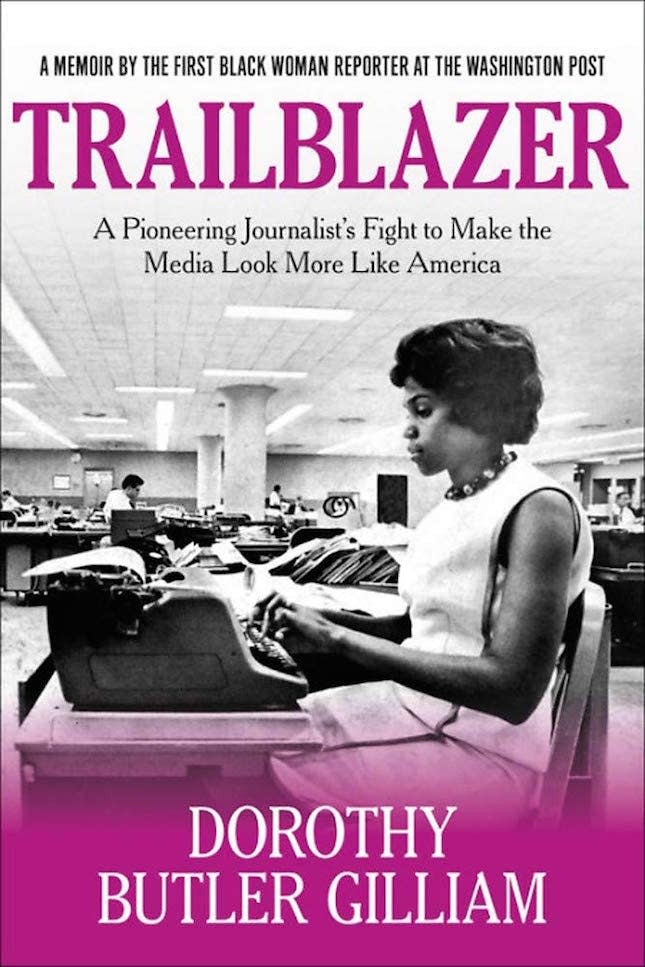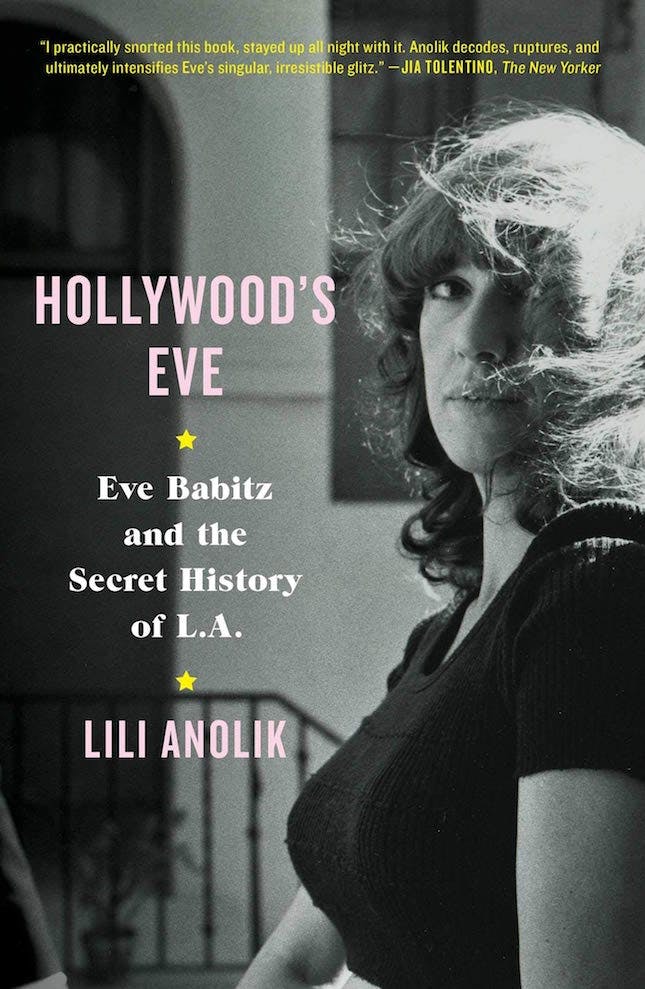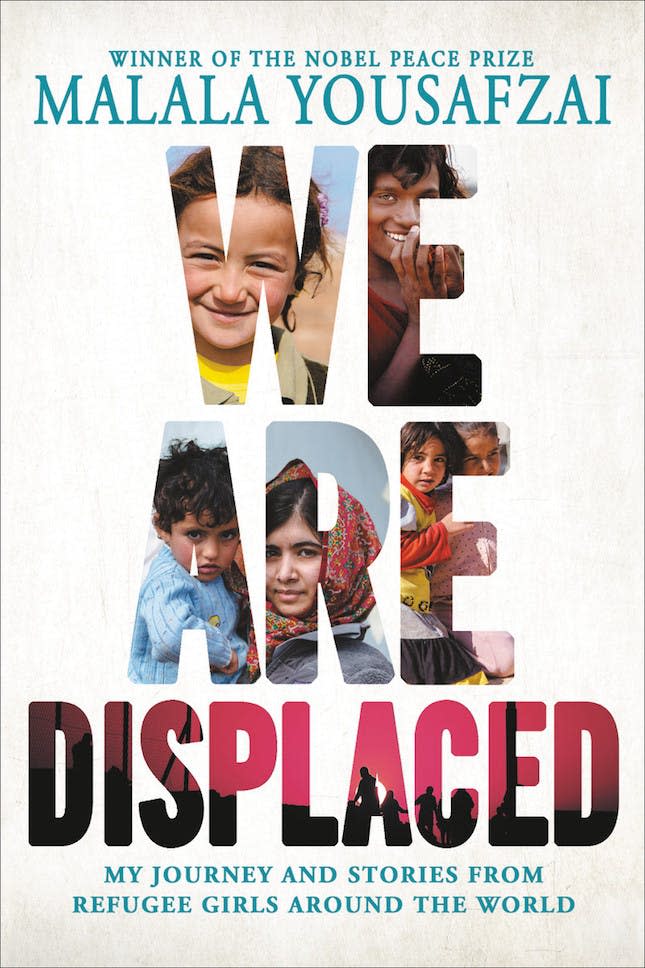3 New Books About Trailblazing Female Journalists Who Got the Scoop
A newspaper barrier-breaker, a city chronicler, a humanitarian crusader. The three women who wrote or who are the subjects in these new nonfiction releases have stories just as compelling as the ones they brought to national attention. The books in this week’s book club are profiles of both the personal lives of these writers and examples of their work. Read all about it!
1. Trailblazer: A Pioneering Journalist’s Fight to make the Media Look More Like America by Dorothy Butler Gilliam ($27): “When I arrived in Washington, D.C., in 1961, the city, the entire country, and the African continent were all on the threshold of change. The dashing, young John F. Kennedy had just begun his presidency promising ‘a new frontier.’ The Civil Rights Movement was kicking into high gear with Dr. Martin Luther King Jr. now urging young people like me to pursue professions we’d been excluded from and to excel. It was thrilling to be in the nation’s capital to begin my career as a daily newspaper journalist in the white papers… The place of Blacks in American society was undergoing radical change when I started working at The Washington Post, and I wanted to be part of telling that story of trials, trauma and, I hoped, transformation.”
Gilliam, the only black woman in her 1961 graduating class at Columbia’s School of Journalism, was the first black female reporter at The Washington Post. Though life in D.C. was a far cry from her childhood in the Jim Crow Deep South, she still experienced painful, frustrating discrimination. It took her much longer to do her job, not because of her abilities (in fact, she filed stories on time simply because she worked so quickly), but because often she simply couldn’t convince cabs, mostly driven by white men, to stop for her. There was only one restaurant that she could be sure would seat her, and white colleagues would talk to her in the office but refuse to acknowledge her on the outside.
Nevertheless, she persisted; she did not want to be pigeonholed into covering only “women’s” or “black” stories and largely succeeded. Over her time at the paper, she would report on a variety of issues, eventually writing a respected column on politics, race, and education. Eventually, she became president of the National Association of Black Journalists and a fellow at The George Washington University School of Media and Public Affairs, and she won the Washington Press Club’s Lifetime Achievement Award in 2010. Her legacy assured, she’s found ways to continue the story by creating a program to bring aspiring high school journalists into professional journalism.
2. Hollywood’s Eve: Eve Babitz and the Secret History of L.A. by Lili Anolik ($26): “Hollywood’s Eve isn’t a biography – at least not in the traditional sense. It won’t attempt to impose narrative structure and logic on life, which is (mostly) incoherent and irrational, lived moment-by-moment and instinctively rather than by grand design and purposefully; or to reach conclusions which are (mostly) hollow and false. In other words, it doesn’t believe, or expect you to, that facts, dates, timelines, firsthand accounts, verifiable sources tell the tale. Here’s what Hollywood’s Eve is: a biography in the nontraditional sense; a case history as well as a cultural [history]; a critical appreciation; a sociological study; a psychological commentary; a noir-style mystery; a memoir in disguise; and a philosophical investigation as contrary, speculative, and unresolved as its subject. Here’s what Hollywood’s Eve is above all else: a love story.”
Anolik, a contributing editor to Vanity Fair, describes her book as being “infatuated” with Babitz, “the louche, wayward, headlong, hidden genius of Los Angeles.” Born in Hollywood to an artist mother and classical violinist father who played with the 20th Century Fox studio orchestra, her godfather was Igor Stravinsky, and she seemed destined for a life of boldface and greatness. With a quick wit and bombshell looks, Babitz was quite popular with the men of Hollywood; her rise to fame started when photographer Julian Wasser exhibited a picture of then-20-year-old Babitz, nude, playing chess with (fully clothed) artist Marcel Duchamp. Her affairs and album cover designs became legendary.
Ten years after the famous photograph, Babitz began to publish articles and short stories chronicling the hedonistic and bizarre world of Los Angeles culture. Her works were marked by a blurring between fiction and non-fiction, creating a voice that was uniquely her own. Reclusive after a terrible fire accident irreparably damaged much of her skin, Babitz in the past few years allowed Anolik into her life to reveal some of her secrets — just as Babitz herself revealed the secret life of her home city.
3. We Are Displaced: My Journey and Stories from Refugee Girls Around the World by Malala Yousafzai ($19): You probably know Malala as the youngest Nobel Peace Prize winner for her courageously feminist, pro-education stance against the Taliban. She’s also a bestselling author, winning accolades for telling her inspiring story. As part of her Malala Fund work, she meets many girls and young women like her, who have fought against poverty and discrimination. Many have been displaced, forced to leave their homes and to seek a better and a more equal life elsewhere. In this book, she chronicles their stories of survival.
At the age of 11, Malala was displaced with her family from their home in the Swat Valley of Pakistan. Unable to attend the school that had meant so much to her, she spoke out about the cruelty of the system, blogging under a pseudonym for BBC Urdu and featuring in a documentary. After the infamous attempt on her life, she was evacuated to a hospital in England with her family; now studying at Oxford, she only returned to Pakistan recently for a brief visit. A part of the book is dedicated to her famous tale, but most of it is given to first-person stories of women from countries such as Yemen, Guatemala, and the Democratic Republic of the Congo who had to leave their lives behind. Each girl becomes a person instead of a statistic. At the end, there’s a section to show motivated readers what they can do to help “People who have lost so much — including loved ones — and then had to start over.”
“This means learning a new language, a new culture, a new way of being,” writes Yousafzai. “I share my story of being displaced not out of a desire to focus on my past, but to honor the people I’ve met and those I’ll never meet. I wrote this book because it seems that too many people don’t understand that refugees are ordinary people. All that differentiates them is that they got caught in the middle of a conflict that forced them to leave their homes, their loved ones, and the only lives they had known. They risked so much along the way, and why? Because it is too often a choice between life and death. And, as my family did a decade ago, they chose life.”
What stories are worth telling? Tag us in your next headline read @BritandCo.
Brit + Co may at times use affiliate links to promote products sold by others, but always offers genuine editorial recommendations.





